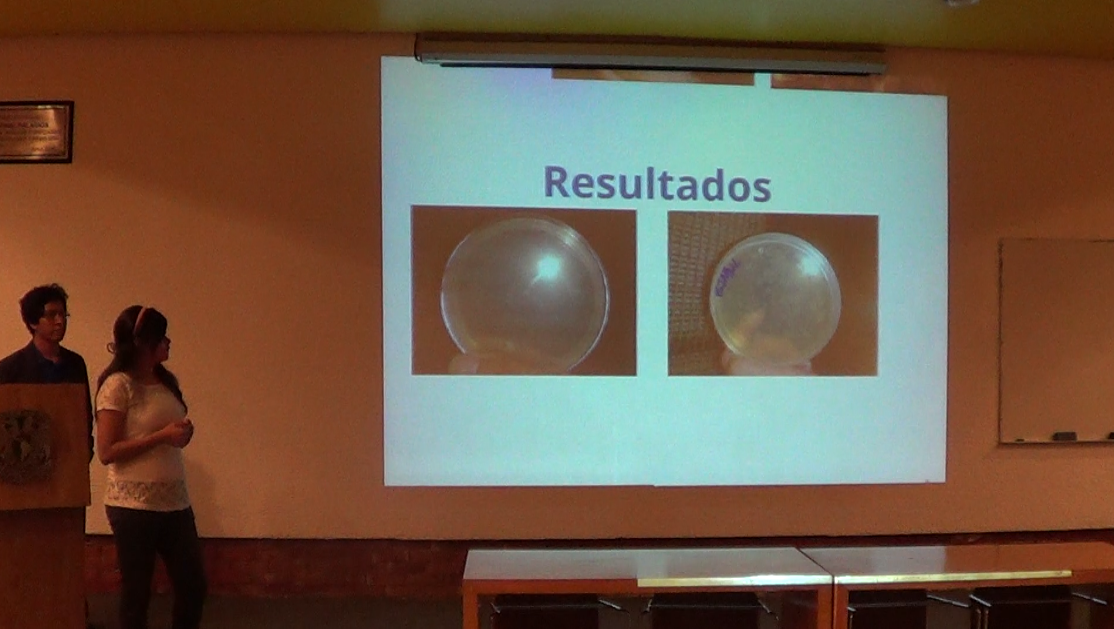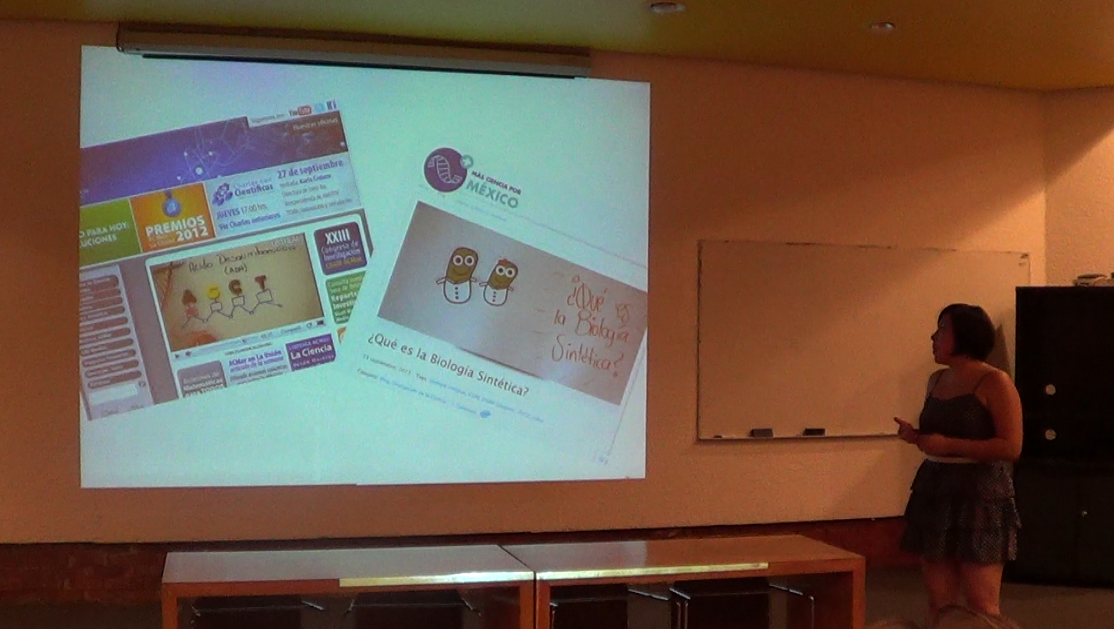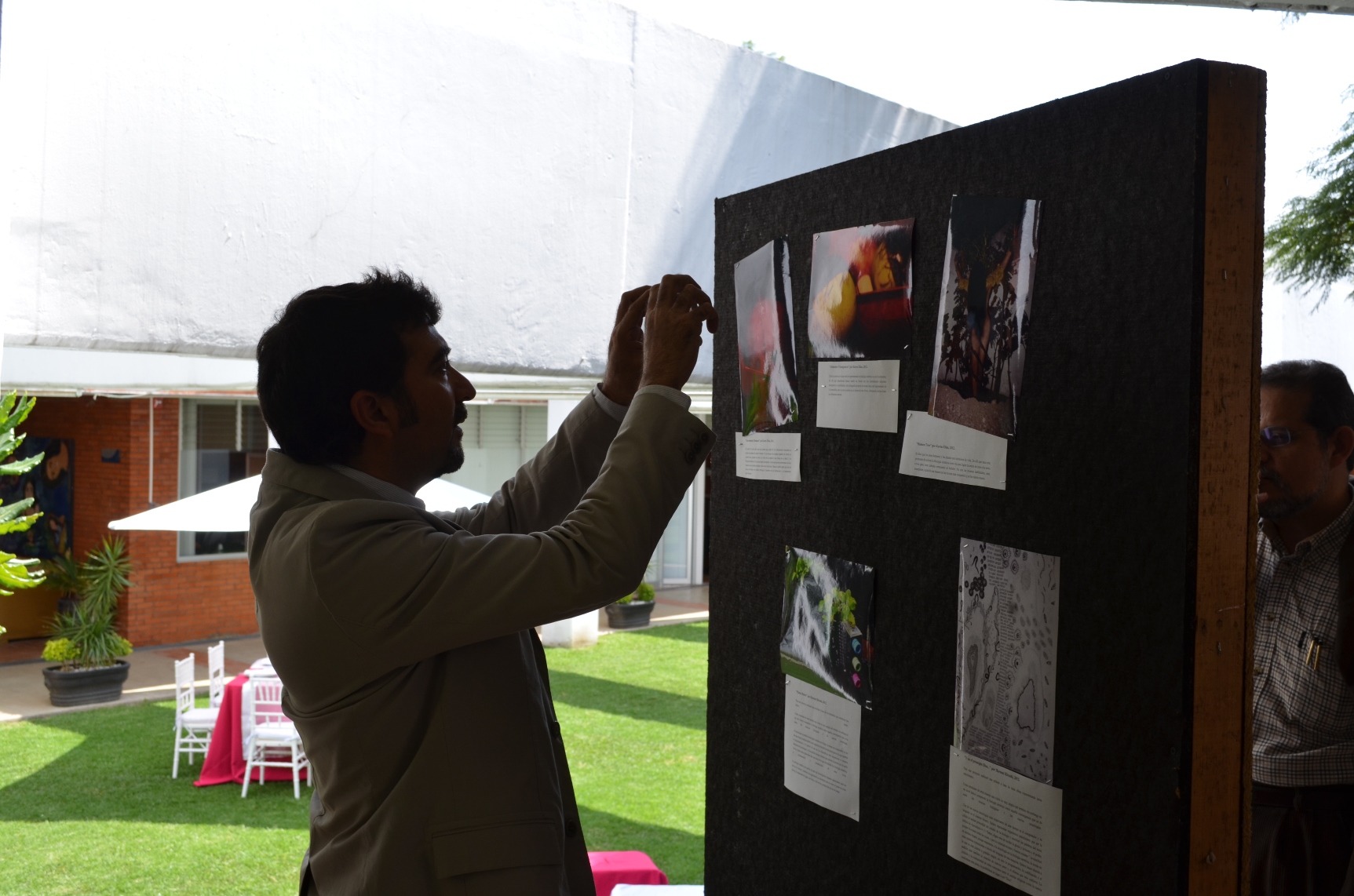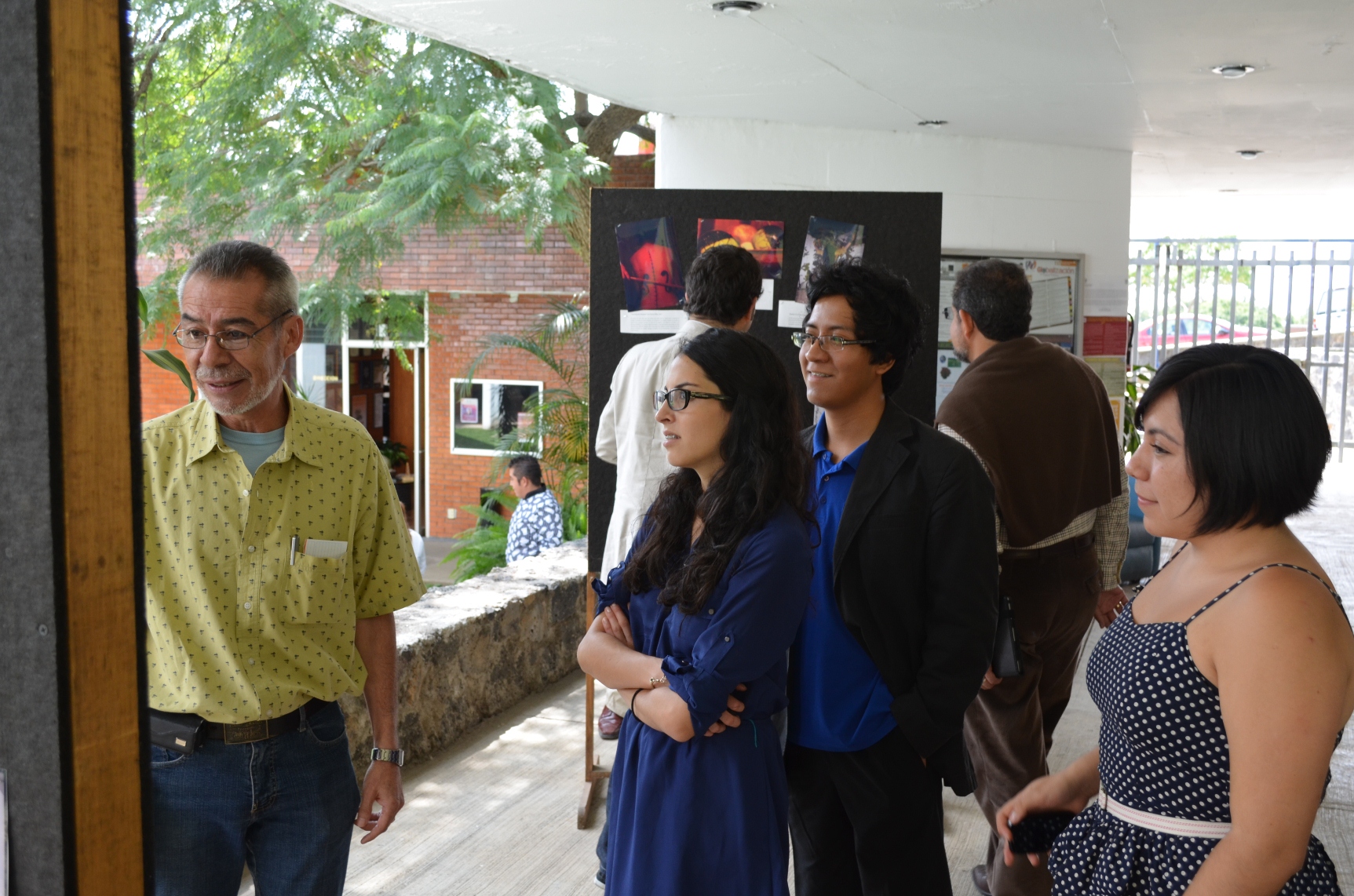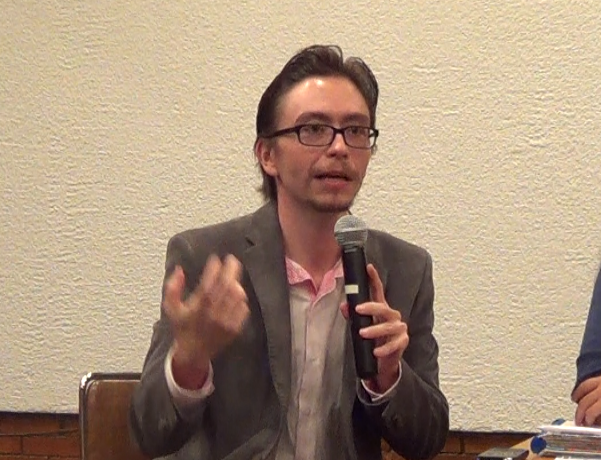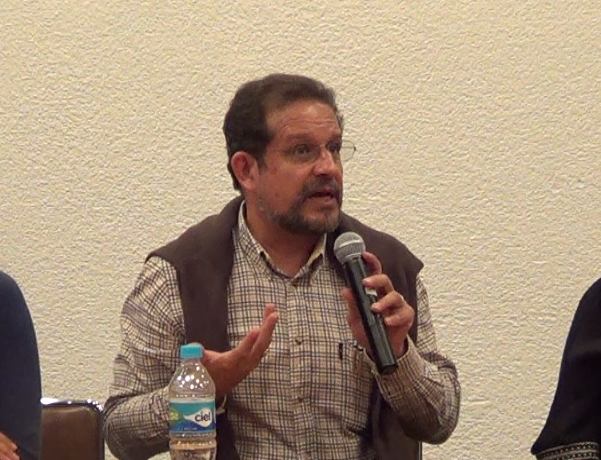Team:UNAM Genomics Mexico/HumanPractices/Round Table
From 2012.igem.org
| Line 142: | Line 142: | ||
<br /> | <br /> | ||
<br /> | <br /> | ||
| + | [[File:Panel1.png | thumb | 300px | right| Our Panel's moderator, José Antonio Alonso]] | ||
The Panel discussed three main issues in Science Communication and Science Perception. The most relevant and interesting ideas are shared below. | The Panel discussed three main issues in Science Communication and Science Perception. The most relevant and interesting ideas are shared below. | ||
<br /> | <br /> | ||
<br /> | <br /> | ||
| - | + | The first issue addressed in the Panel was the perception of Scientists as people detached from society and it's needs. Following the Victor Frankenstein's analogy, we asked our panelists about their thoughts on the issue of science communication, and whether there should be a duty to build a bridge between the scientific community and society. | |
| - | + | <br /> | |
| + | <br /> | ||
| + | Julia stated that there is indeed an obligation to have a meaningful outreach to society, although she recognized that there are scientists that have the gift to communicate the ideas clearer and more effectively. She quoted one of the pioneers in Science Communication in Mexico, Luis Estrada, to support this idea: "If Science communication has to be done, let it be done by those who know how to do it, regardless of who they might be". | ||
| + | <br /> | ||
| + | <br /> | ||
| + | It is well known that there are scientist that are not as gifted as others to create these bridges with the community since their skills might not be sufficient to grasp the attention of the public. Nevertheless, as Julia said, there are still the multidisciplinary groups created to help them in this particular task. To that matter, she suggested that scientist could involved an effective communicator and collaborate with others to have a meaningful communication with society, as some scientists have done with the Science Museum of the National Autonomous University of México Universum. | ||
| + | <br /> | ||
| + | <br /> | ||
| + | For his part, Martin stressed the necessity of a bidirectional process, where not only scientist recognize the compromise to share, communicate and democratize scientific knowledge, but also acknowledging that as citizens and members of the community we have an obligation to be concerned about the progress and direction of scientific process, funding and uses of scientific results. He talked about the evolution of science communication, where in the beginning there was a disdain for the idea of putting the scientific knowledge in the hands of lay people, an idea that has been progressively disappearing but that some scientist still hold. In that context, science communication plays a paramount importance: transmission of knowledge and making people interested, wich eventually will lead them to ask for more information, making science a more democratic process, so that our culture turns to be also a scientific culture. To achieve this, he pointed the recent use of the social networks to achieve a dialogue with those who receive communication, and starting a dialogue with them. | ||
| + | <br /> | ||
| + | <br /> | ||
| + | [[File:Panel2.png | thumb | 300px | left| David Romero compared some scientist lacking the ability to share scientific concepts in simple words with the "Pink Panther": they lose all graciousness when they start talking. How to change this situation?]] | ||
| + | David acknowledged that there are a lot of scientists that indeed lack the ability to transmit the concepts behind their works in simple words adequate for the general public. He noted that during scientific formation, several of these scientists lose the ability to talk about science in a simple way, and that they transmit this inability further to their students. Therefore, David pointed that there's a need for better means of science communication, not only for the general public but also for the scientific community, because as scientists we also need to know what is being done by others within Mexico and outside the country. This means that scientists need to stop considering outreach as a secondary activity. | ||
| + | <br /> | ||
| + | <br /> | ||
| + | Alejandra closed this section of the panel stating that our outreach experiences start at home. She shared the experience of many students of the areas of genetics and molecular biology, when they have to explain in simple words what they do to their families (and specially when their families are not acquainted with basic concepts in biology). In the end, our main goal according to Alejandra is to create interest in those people who prefer watching noneducational contents on the TV or would rather read an exaggerated story in the newspaper instead of science outreach material. | ||
| + | <br /> | ||
| + | <br /> | ||
Revision as of 03:43, 26 October 2012

Symposium on Science Communication
Every stage in a project must come to a closing. The same way all of our favorite TV shows have Season Finales, our Human Practices project came to a "season finale " with an event that congregated several personalities at the local and national level to discuss the issues we addressed throughout this year.
This event was a Symposium on Science Communication called "Perspectives on Science Perception and Communication", held at the Auditorium of the Center for Genomic Sciences on October 23rd, 2012. This symposium consisted of the following activities:
- 1. Inauguration by the Minister of Innovation, Science and Technology of the State of Morelos, Mexico, Brenda Valderrama.
- 2. Presentation of the Bacillus Booleanus project by our Team Members
- 3. A brief recess to allow the atendees of the Symposium to see the BioSintetizARTE exposition
- 4. A Panel about Science Communication and Perception with noted science communicators, scientists and representatives of the society.
Foreword by Brenda Valderrama
The Minister of Innovation, Science and Technology of the State of Morelos, Mexico, Brenda Valderrama, attended our event and commented on the actions taken by our State's government on the area of Science and Technology. She mentioned the need to close the links between different players in the field of Science and Technology, ranging from those scientist doing basic science, translational research and technological innovation. But she also stressed the necessity to transfer basic knowledge to the general public, and mentioned that a third of the Development Plan of her Ministry is devoted to the diffusion, communication and appropriation of scientific knowledge by society.
Among the plans the Innovation, Science and Technology Ministry has to promote the field of Science Communication, the State will promote the existing instruments already in place as the Museum of Sciences of Morelos and the great number of scientists in the State towards the creation of the Morelos's Center for Science Communication, a top notch center devoted to the task of outreach.
After she delivered her foreword, minister Valderrama inaugurated formally the symposium.
Presentation of the Project
We presented our project to the attendees of the symposium, giving special emphasis to our Human Practices project. Here are some pics:
BioSintetizARTE exposition
We also mounted the BioSintetizARTE exposition so the attendees of the symposium could appreciate the results of the call we made. Here are some pics of some of the attendees enjoying some art:
Round Table
The main activity scheduled in our symposium was a Panel where noted personalities shared with us their points of view on the activities we preformed for our Human Practices project.
Our guests to the Panel were:
- Julia Tagüeña Parga, Member of the Mexican Society of Science and Technic Outreach and former director of the Science Museum Universum, and researcher at the Center for Energy Research.
- Alejandra Zayas del Moral, president of the non-profit organization Más Ciencia por México
- Martín Bonfil Olivera, one of the most known science communicators in Mexico, who is also member of the Mexican Society of Science and Technic Outreach and te General Direction of Science Communication of our University
- David Romero Camarena, director of the Center for Genomic Sciences.
- The Panel was moderated by José Antonio Alonso Pavón, our Human Practices Advisor.
The Panel discussed three main issues in Science Communication and Science Perception. The most relevant and interesting ideas are shared below.
The first issue addressed in the Panel was the perception of Scientists as people detached from society and it's needs. Following the Victor Frankenstein's analogy, we asked our panelists about their thoughts on the issue of science communication, and whether there should be a duty to build a bridge between the scientific community and society.
Julia stated that there is indeed an obligation to have a meaningful outreach to society, although she recognized that there are scientists that have the gift to communicate the ideas clearer and more effectively. She quoted one of the pioneers in Science Communication in Mexico, Luis Estrada, to support this idea: "If Science communication has to be done, let it be done by those who know how to do it, regardless of who they might be".
It is well known that there are scientist that are not as gifted as others to create these bridges with the community since their skills might not be sufficient to grasp the attention of the public. Nevertheless, as Julia said, there are still the multidisciplinary groups created to help them in this particular task. To that matter, she suggested that scientist could involved an effective communicator and collaborate with others to have a meaningful communication with society, as some scientists have done with the Science Museum of the National Autonomous University of México Universum.
For his part, Martin stressed the necessity of a bidirectional process, where not only scientist recognize the compromise to share, communicate and democratize scientific knowledge, but also acknowledging that as citizens and members of the community we have an obligation to be concerned about the progress and direction of scientific process, funding and uses of scientific results. He talked about the evolution of science communication, where in the beginning there was a disdain for the idea of putting the scientific knowledge in the hands of lay people, an idea that has been progressively disappearing but that some scientist still hold. In that context, science communication plays a paramount importance: transmission of knowledge and making people interested, wich eventually will lead them to ask for more information, making science a more democratic process, so that our culture turns to be also a scientific culture. To achieve this, he pointed the recent use of the social networks to achieve a dialogue with those who receive communication, and starting a dialogue with them.
David acknowledged that there are a lot of scientists that indeed lack the ability to transmit the concepts behind their works in simple words adequate for the general public. He noted that during scientific formation, several of these scientists lose the ability to talk about science in a simple way, and that they transmit this inability further to their students. Therefore, David pointed that there's a need for better means of science communication, not only for the general public but also for the scientific community, because as scientists we also need to know what is being done by others within Mexico and outside the country. This means that scientists need to stop considering outreach as a secondary activity.
Alejandra closed this section of the panel stating that our outreach experiences start at home. She shared the experience of many students of the areas of genetics and molecular biology, when they have to explain in simple words what they do to their families (and specially when their families are not acquainted with basic concepts in biology). In the end, our main goal according to Alejandra is to create interest in those people who prefer watching noneducational contents on the TV or would rather read an exaggerated story in the newspaper instead of science outreach material.
 "
"















